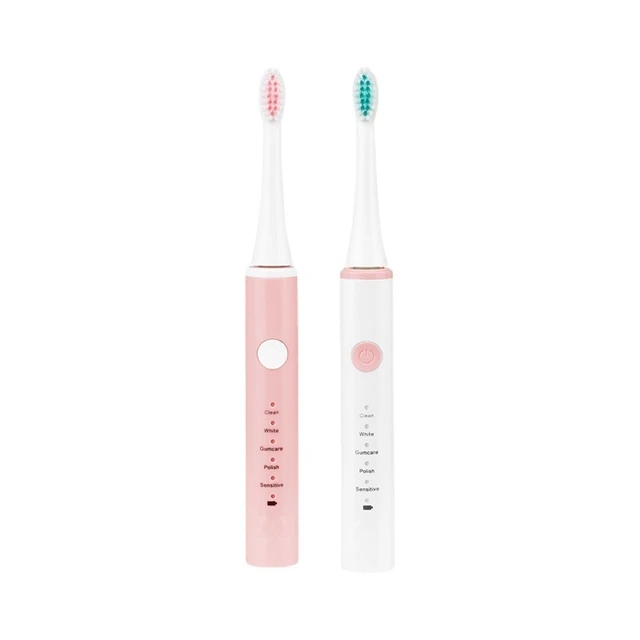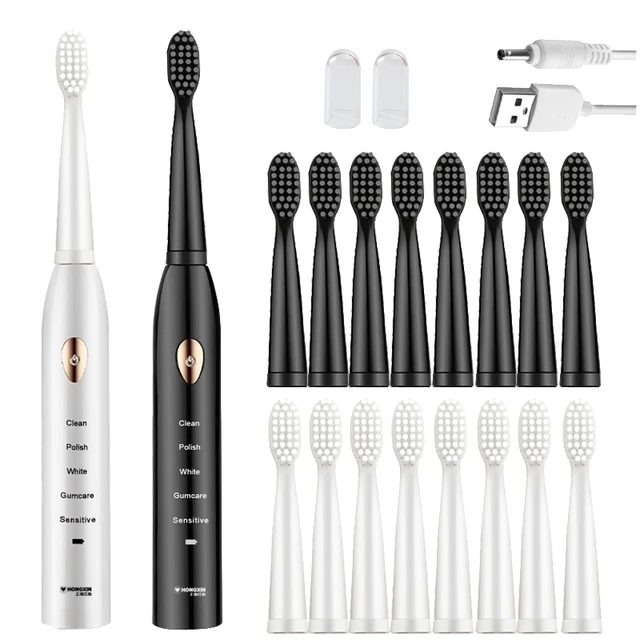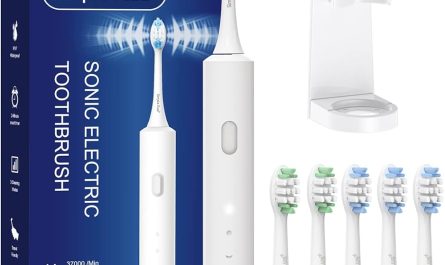Introduction:
Using an electric toothbrush can be an effective way to maintain optimal oral hygiene. However, it’s important to understand the proper technique for brushing with an electric toothbrush to ensure maximum cleaning and protection for your teeth and gums. In this guide, we will explore the step-by-step process of brushing with an electric toothbrush, from preparing the toothbrush to completing your oral care routine. By following these guidelines, you can achieve a thorough and effective clean for a healthier smile.

How to brush with electric toothbrush?
Preparing the Electric Toothbrush:
Before starting your brushing routine, it’s important to properly prepare your electric toothbrush. Follow these steps:
a. Charge the Toothbrush: Ensure that your electric toothbrush is fully charged or has sufficient battery power to complete your brushing session. This will ensure uninterrupted power throughout the process.
b. Attach the Brush Head: Select the appropriate brush head for your needs and attach it securely to the toothbrush handle. Ensure that it is aligned properly and clicks into place.
c. Apply Toothpaste: Apply a pea-sized amount of toothpaste onto the brush head. Use a toothpaste that contains fluoride and is recommended by your dentist for maximum oral care benefits.
Positioning the Electric Toothbrush:
Proper positioning of the electric toothbrush is key to achieving a thorough cleaning. Follow these guidelines:
a. Hold the Toothbrush Correctly: Hold the electric toothbrush like a regular toothbrush, ensuring a comfortable grip. Keep a relaxed but firm hold on the handle, avoiding excessive pressure.
b. Angle the Brush Head: Tilt the brush head at a 45-degree angle towards the gumline. This allows the bristles to effectively reach the area where the teeth meet the gums.
c. Be Mindful of Pressure: Avoid applying excessive pressure while brushing. Let the electric toothbrush’s motion and the bristles do the work for you. Gentle pressure is sufficient for a thorough clean.

Brushing Technique:
Now that you have prepared the toothbrush and positioned it correctly, it’s time to start brushing. Follow these steps for an effective brushing technique:
a. Start with the Outer Surfaces: Begin by brushing the outer surfaces of your teeth. Start at the back of your mouth and work your way towards the front. Use a small, circular or back-and-forth motion along the gumline and the surface of each tooth. Spend a few seconds on each tooth before moving to the next.
b. Move to the Inner Surfaces: After completing the outer surfaces, move to the inner surfaces of your teeth. Follow the same circular or back-and-forth motion along the gumline and the surface of each tooth. Pay extra attention to hard-to-reach areas and ensure thorough cleaning.
c. Brush the Chewing Surfaces: Next, focus on the chewing surfaces of your teeth. Use a back-and-forth motion to clean these surfaces, ensuring that the bristles reach the pits and crevices of the molars.
d. Address the Tongue: To maintain fresh breath, gently brush your tongue using the brush head or a dedicated tongue cleaner. Start from the back of the tongue and move forward, removing any bacteria or debris.

Timing and Techniques:
To ensure a thorough clean, it’s essential to pay attention to timing and techniques. Consider the following:
a. Two-Minute Timer: Most electric toothbrushes have a built-in two-minute timer. Brush for the entire two-minute duration to ensure an adequate cleaning of all surfaces and areas of the mouth.
b. Quadpacer: Some electric toothbrushes include a Quadpacer feature that alerts you every 30 seconds. This prompts you to move to a different quadrant of the mouth, ensuring equal attention to all areas.
c. Brushing Patterns: Experiment with different brushing patterns to find what works best for you. Circular, back-and-forth, or up-and-down motions can all be effective. The key is to cover all tooth surfaces and focus on the gumline.
d. Gentle and Controlled Movement: Let the electric toothbrush do the work. Avoid aggressive scrubbing or excessive pressure, as it can lead to gum irritation or enamel damage. Use gentle, controlled movements to guide the brush along the teeth and gums.
Rinsing and Post-Brushing Care:
After completing your brushing routine, it’s important to follow these steps for rinsing and post-brushing care:
a. Rinse Your Mouth: Thoroughly rinse your mouth with water to remove any remaining toothpaste, debris, or bacteria.
b. Rinse the Brush Head: Rinse the brush head under running water to remove any toothpaste residue or debris. Shake off any excess water.
c. Store the Toothbrush: Store your electric toothbrush in an upright position, allowing it to air dry. Avoid covering the brush head or storing it in an enclosed container, as this can create a breeding ground for bacteria.
d. Replace the Brush Head: Follow the manufacturer’s guidelines for replacing the brush head. Most recommend replacing it every three to four months or sooner if the bristles become frayed or worn.

Regular Dental Check-ups:
Remember that regular dental check-ups are essential for maintaining optimal oral health. Even with proper brushing techniques, professional cleanings and examinations by a dentist are crucial for detecting and preventing oral health issues.
Additional Tips for Brushing with an Electric Toothbrush:
In addition to the fundamental steps mentioned above, here are some additional tips to enhance your brushing experience with an electric toothbrush:
a. Start Slowly: If you are new to using an electric toothbrush, start with a lower intensity setting and gradually increase it as you become more comfortable. This will help you adjust to the vibrations and sensations of the electric toothbrush.
b. Brush all Surfaces: Ensure that you brush all surfaces of your teeth, including the front, back, and chewing surfaces. Electric toothbrushes are designed to reach areas that may be difficult to access with a manual toothbrush, so take advantage of this capability.
c. Maintain a Consistent Pressure: While electric toothbrushes do most of the work for you, it’s important to maintain a consistent pressure against your teeth and gums. Avoid applying excessive force, as it can lead to gum irritation or enamel damage. Let the bristles glide gently over your teeth and gums.
d. Follow Your Dentist’s Recommendations: Your dentist is the best source of advice when it comes to your oral health. They can guide you on the appropriate brushing technique, recommended brushing time, and any specific areas that may require additional attention. Consult with your dentist regularly to ensure you are optimizing your oral care routine with your electric toothbrush.

Conclusion:
Brushing with an electric toothbrush requires proper preparation, positioning, and technique. By ensuring that your electric toothbrush is fully charged, holding it correctly, and positioning the brush head at a 45-degree angle, you set the stage for an effective clean. Follow a gentle brushing technique, focusing on the outer and inner surfaces of the teeth, as well as the chewing surfaces. Pay attention to timing and techniques, utilizing the two-minute timer and Quadpacer if available. Rinse your mouth and the brush head, store the toothbrush properly, and replace the brush head as recommended. Remember to schedule regular dental check-ups to maintain optimal oral health. By following these steps, you can maximize the benefits of your electric toothbrush and achieve a healthier smile.



